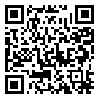Volume 5, Issue 1 (Continuously Updated 2022)
Func Disabil J 2022, 5(1): 0-0 |
Back to browse issues page
Download citation:
BibTeX | RIS | EndNote | Medlars | ProCite | Reference Manager | RefWorks
Send citation to:



BibTeX | RIS | EndNote | Medlars | ProCite | Reference Manager | RefWorks
Send citation to:
Mirzaee Saba L, Dehghanian Nasrabad F, Aleshi N, Jafarzadehpur E. Diurnal Variations of Exophoria in Subjects With Normal Vision. Func Disabil J 2022; 5 (1) : 55
URL: http://fdj.iums.ac.ir/article-1-186-en.html
URL: http://fdj.iums.ac.ir/article-1-186-en.html
1- Department of Optometry, School of Rehabilitation Sciences, Iran University of Medical Sciences. Tehran, Iran.
2- Department of Optometry, School of Rehabilitation Sciences, Rehabilitation Research Center, Iran University of Medical Sciences, Tehran, Iran. ,Jafarzadehpour.e@iums.ac.ir
2- Department of Optometry, School of Rehabilitation Sciences, Rehabilitation Research Center, Iran University of Medical Sciences, Tehran, Iran. ,
Abstract: (2068 Views)
Background and Objectives: We aimed to investigate the variation of heterophoria during a day in students with a normal visual system.
Methods: This cross-sectional observational study was conducted on 15 students aged 19 to 22 years with 20/20 visual acuity and normal binocular vision. Heterophoria was measured with a prism bar and alternate cover test at near and far distances (40 cm and 6 m). The measurement was performed from 8 to 10 PM in one day with 2 hours intervals.
Results: The Mean±SD age of students was 21.6±0.87 years (63% women and 37% men). The mean deviation in far and near order was 1.93 and 3.75 prism diopter, respectively. The Greenhouse-Geisser test concluded no significant difference between the measurements of distant heterophoria during the day (F=1.362, df=3.066, P=0.267). However, the near-distance results were significant (F=15.17, df=7, P˂0.05). The paired t-test results showed that the highest amount of exophoria was observed near 4 PM, which was significantly different from the initial value, and the difference increases at the end of the day so that the mean difference of the initial near exophoria value from 4 to 10 PM reached from -1.254 to -3.508.
Conclusion: Changes in refractive error or high order aberration increase near work and decrease the illumination during a day can induce force on accommodation and vergence. So, at the end of the day, the exophoria increases. Thus, it is preferable to perform eye examinations at the end of the day to make more accurate decisions about the diagnosis and treatment of patients.
Methods: This cross-sectional observational study was conducted on 15 students aged 19 to 22 years with 20/20 visual acuity and normal binocular vision. Heterophoria was measured with a prism bar and alternate cover test at near and far distances (40 cm and 6 m). The measurement was performed from 8 to 10 PM in one day with 2 hours intervals.
Results: The Mean±SD age of students was 21.6±0.87 years (63% women and 37% men). The mean deviation in far and near order was 1.93 and 3.75 prism diopter, respectively. The Greenhouse-Geisser test concluded no significant difference between the measurements of distant heterophoria during the day (F=1.362, df=3.066, P=0.267). However, the near-distance results were significant (F=15.17, df=7, P˂0.05). The paired t-test results showed that the highest amount of exophoria was observed near 4 PM, which was significantly different from the initial value, and the difference increases at the end of the day so that the mean difference of the initial near exophoria value from 4 to 10 PM reached from -1.254 to -3.508.
Conclusion: Changes in refractive error or high order aberration increase near work and decrease the illumination during a day can induce force on accommodation and vergence. So, at the end of the day, the exophoria increases. Thus, it is preferable to perform eye examinations at the end of the day to make more accurate decisions about the diagnosis and treatment of patients.
Article number: 55
Type of Study: Research |
Subject:
Optometry
Received: 2022/08/7 | Accepted: 2022/09/24 | Published: 2022/02/3
Received: 2022/08/7 | Accepted: 2022/09/24 | Published: 2022/02/3








